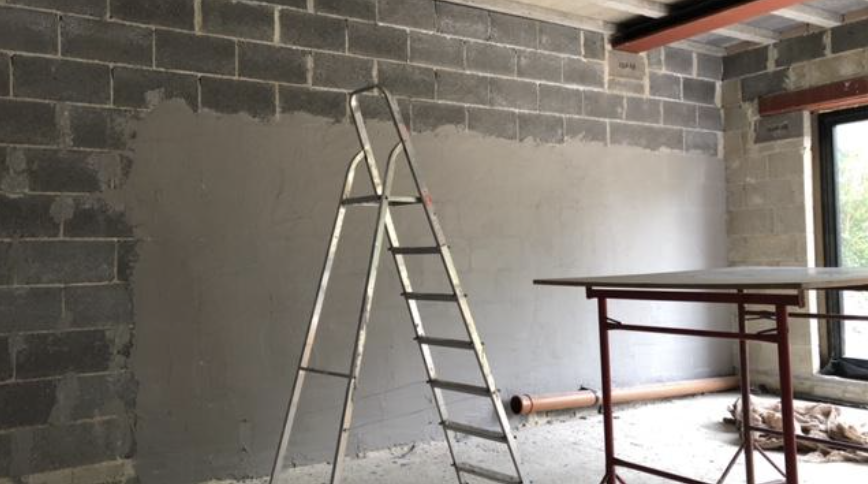The term parge coat refers to the application of a thin coat of cement or polymeric mortar to concrete or masonry walls. Great, but why is this practice done and how does it work? We’ve got the answers you need.
How is the parging mixture made?
Parging is made from a blend of lime, water, and cement. Adding the proper types and amounts for blending can be challenging, as it can prove tricky to get the ratios and balance just right. If not done properly, bad blends can cause cracked parging and issues with the parging sticking to the wall, which can lead to all sorts of structural problems when bad weather hits. That’s why it’s best left to an experienced professional instead of trying to mix the solution yourself.
How is a parge coat applied?
Once the right mixture is ready, the parging mortar is applied to a wet wall with a masonry trowel. Depending on how you would like the surface to look, the mortar can be applied to create a smooth wall or to have a more textured wall. Once applied, you can easily paint it to match the décor of your home.
What’s great about a parge coat is that the application process is very simple. All you need to do is apply a continuous coating of at least 6mm over the entire brickwork. This can be applied by hand or by spray, and you won’t even need to trowel it flat!
Although a parge coat is a simple product that’s really easy to apply, the benefits are far from small. This handy product can help you to deliver homes that are both comfortable, energy-efficient and futureproofed against any upcoming regulations.
Above: Midway through a parge coat application
Why should I use a parge coat?
Parging can reduce air leakage through cracks, joints and porous wall constructions and so reduce energy consumption and improve comfort. Acoustic performance is also improved, with fewer soundwaves travelling through the walls directly leading to less noise.
If you’re drylining in a new house, for example, a parge coat will need to be applied to the internal brickwork first for those reasons. A topcoat is usually added over the parge coat; with this in mind, it’s not necessary to get a perfectly flat parge coat, as the topcoat will cover it.
Is parging the same as pargeting?
No, parging is not the same as pargeting. Pargeting is the decorative plastering on the front of buildings – something different altogether from parging.
Closing thought
When looking to cut heating costs and reduce noise, parging can be really helpful. Energy efficiency and acoustic performance are so important to day-to-day life, and it’s always helpful to know how you can make improvements.
Get in touch with us here if you’d like more information and solutions on how to make your home more efficient, quiet and comfortable.




